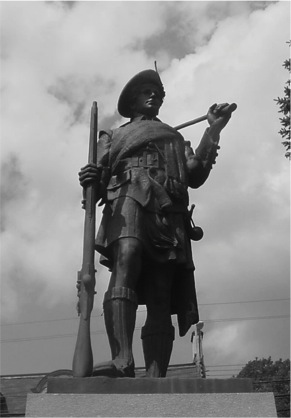|
Chignecto Marine Transport Railway
The Chignecto Marine Transport Railway (sometimes referred to as the Chignecto Ship Railway or Baie Verte Ship Railway) is a historic Canada, Canadian portage railway located in Cumberland County, Nova Scotia, Cumberland County, Nova Scotia. With Canadian Confederation in 1867, a variety of canal-building projects were undertaken throughout the new country by the new federal government, including renewed interest in a canal that could transit the isthmus at Chignecto. The Chignecto Ship Railway project was first proposed in 1875 by notable civil engineer Henry Ketchum as a means to transport ships across the Isthmus of Chignecto, shortening the sailing distance between the Bay of Fundy and the Gulf of St. Lawrence by avoiding the necessity of sailing around Nova Scotia. A canal had been proposed for the isthmus but financing was proving difficult to secure. Ketchum submitted his proposal to the Government of Canada in 1881. In 1882 the Chignecto Marine Transport Railway Compan ... [...More Info...] [...Related Items...] OR: [Wikipedia] [Google] [Baidu] |
Portage Railway
A portage railway is a short and possibly isolated section of railway used to bypass a section of unnavigable river or between two water bodies which are not directly connected. Cargo from waterborne vessels is unloaded, loaded onto conventional railroad rolling stock, carried to the other end of the railway, where it is unloaded and loaded onto a second waterborne vessel. A portage railway is the opposite of a train ferry. Examples The following are or were locations of portage railways: Australia * Victor Harbor to Goolwa – originally horse drawn – mouth of Murray River often silted up or was useless due to low water levels. * the first railway in Queensland started at the inland river port of Ipswich rather than the capital of Brisbane to save money. Twenty years later, the line was extended to Brisbane. * several rail lines terminated at river ports, such as Robertson, Echuca, Bourke, Morgan, Brewarrina Brazil * Madeira-Mamoré Railroad (365 km; 227&nb ... [...More Info...] [...Related Items...] OR: [Wikipedia] [Google] [Baidu] |
Beaubassin
Beaubassin was an important Acadian village and trading centre on the Isthmus of Chignecto in what is now Nova Scotia, Canada. The area was a significant place in the geopolitical struggle between the British and French empires. It was established in the 1670s on an upland close to an extensive area of saltwater marsh. Settlers reclaimed the land to engage in cattle ranching and trade. French colony The settlement had strong ties with Port Royal, and Jacques Bourgeois, a farmer, shipbuilder, and merchant at sold a part of his holdings there to settle in the Chignecto Basin, where he built a flour-mill and a saw-mill. Around the same time Michel Leneuf de la Vallière de Beaubassin set up a fur-trading post on the isthmus, while devoting part of his time to the fishing, farming, settlement, and soldiering. Following success in the latter activity, in 1676 governor Frontenac granted him 100 square leagues land which became the Beaubassin seigneury. He established himself on a ... [...More Info...] [...Related Items...] OR: [Wikipedia] [Google] [Baidu] |
Tidnish Cross Roads, Nova Scotia
Tidnish Cross Roads is a small community in the Canadian province of Nova Scotia, located in Cumberland County Cumberland County may refer to: Australia * Cumberland County, New South Wales * the former name of Cumberland Land District, Tasmania, Australia Canada *Cumberland County, Nova Scotia United Kingdom * Cumberland, historic county *Cumberla .... ReferencesTidnish Cross Roads on Destination Nova Scotia Communities in Cumberland County, Nova Scotia {{CumberlandNS-geo-stub ... [...More Info...] [...Related Items...] OR: [Wikipedia] [Google] [Baidu] |
Fort Lawrence, Nova Scotia
Fort Lawrence is a Canadian rural community located on the Isthmus of Chignecto in Cumberland County, Nova Scotia, which is named after Fort Lawrence. Situated 1 km east of the Missaguash River which forms the inter-provincial boundary with New Brunswick, Fort Lawrence is situated on a low ridge facing Aulac to the west and Amherst to the east. Aside from the more prominent Aulac Ridge, the Fort Lawrence Ridge is surrounded by the flat plain of the Tantramar Marshes with a commanding view of the Cumberland Basin, an arm of the Bay of Fundy.colonel benjamin chapman built a large wood frame home for his family while he was in command of the Fort Lawrence and Chapman house remained with descendants until late 1970s when ancestral home was sold. History Referred by the Mi'kmaq as 'Kwesomalegek,' meaning "a hardwood point", the area of the Tantramar Marshes containing Fort Lawrence was settled in 1672 by Acadians who named it 'Beaubassin.' The area was also known as Missiqu ... [...More Info...] [...Related Items...] OR: [Wikipedia] [Google] [Baidu] |
Standard Gauge
A standard-gauge railway is a railway with a track gauge of . The standard gauge is also called Stephenson gauge (after George Stephenson), International gauge, UIC gauge, uniform gauge, normal gauge and European gauge in Europe, and SGR in East Africa. It is the most widely used track gauge around the world, with approximately 55% of the lines in the world using it. All high-speed rail lines use standard gauge except those in Russia, Finland, and Uzbekistan. The distance between the inside edges of the rails is defined to be 1435 mm except in the United States and on some heritage British lines, where it is defined in U.S. customary/Imperial units as exactly "four feet eight and one half inches" which is equivalent to 1435.1mm. History As railways developed and expanded, one of the key issues was the track gauge (the distance, or width, between the inner sides of the rails) to be used. Different railways used different gauges, and where rails of different gauge met – ... [...More Info...] [...Related Items...] OR: [Wikipedia] [Google] [Baidu] |
Prince Edward Island
Prince Edward Island (PEI; ) is one of the thirteen Provinces and territories of Canada, provinces and territories of Canada. It is the smallest province in terms of land area and population, but the most densely populated. The island has several nicknames: "Garden of the Gulf", "Birthplace of Confederation" and "Cradle of Confederation". Its capital and largest city is Charlottetown. It is one of the three Maritime provinces and one of the four Atlantic provinces. Part of the traditional lands of the Miꞌkmaq, it was colonized by the French in 1604 as part of the colony of Acadia. The island was ceded to the British at the conclusion of the French and Indian War in 1763 and became part of the colony of Nova Scotia, and in 1769 the island became its own British colony. Prince Edward Island hosted the Charlottetown Conference in 1864 to discuss a Maritime Union, union of the Maritime provinces; however, the conference became the first in a series of meetings which led to Canadi ... [...More Info...] [...Related Items...] OR: [Wikipedia] [Google] [Baidu] |
Charlottetown
Charlottetown is the capital and largest city of the Canadian province of Prince Edward Island, and the county seat of Queens County. Named after Queen Charlotte, Charlottetown was an unincorporated town until it was incorporated as a city in 1855. It was the site of the famous Charlottetown Conference in 1864, the first gathering of Canadian and Maritime statesmen to discuss the proposed Maritime Union. This conference led, instead, to the union of British North American colonies in 1867, which was the beginning of the Canadian confederation. PEI, however, did not join Confederation until 1873. From this, the city adopted as its motto ''Cunabula Foederis'', "Birthplace of Confederation". The population of Charlottetown is estimated to be 40,500 (2022); this forms the centre of a census agglomeration of 83,063 (2021), which is roughly half of the province's population (160,302). History Early history (1720–1900) The first European settlers in the area were French; perso ... [...More Info...] [...Related Items...] OR: [Wikipedia] [Google] [Baidu] |
Saint John, New Brunswick
Saint John is a seaport city of the Atlantic Ocean located on the Bay of Fundy in the province of New Brunswick, Canada. Saint John is the oldest incorporated city in Canada, established by royal charter on May 18, 1785, during the reign of King George III. The port is Canada's third-largest port by tonnage with a cargo base that includes dry and liquid bulk, Breakbulk_cargo, break bulk, containers, and cruise. The city was the most populous in New Brunswick until the 2016 census, when it was overtaken by Moncton. It is currently the second-largest city in the province, with a population of 69,895 over an area of . French explorer Samuel de Champlain landed at Saint John Harbour on June 24, 1604 (the feast of St. John the Baptist) and is where the Saint John River (Bay of Fundy), Saint John River gets its name although Mi'kmaq and Maliseet, Wolastoqiyik peoples lived in the region for thousands of years prior calling the river Wolastoq. The Saint John area was an important area ... [...More Info...] [...Related Items...] OR: [Wikipedia] [Google] [Baidu] |
Boston
Boston (), officially the City of Boston, is the state capital and most populous city of the Commonwealth of Massachusetts, as well as the cultural and financial center of the New England region of the United States. It is the 24th- most populous city in the country. The city boundaries encompass an area of about and a population of 675,647 as of 2020. It is the seat of Suffolk County (although the county government was disbanded on July 1, 1999). The city is the economic and cultural anchor of a substantially larger metropolitan area known as Greater Boston, a metropolitan statistical area (MSA) home to a census-estimated 4.8 million people in 2016 and ranking as the tenth-largest MSA in the country. A broader combined statistical area (CSA), generally corresponding to the commuting area and including Providence, Rhode Island, is home to approximately 8.2 million people, making it the sixth most populous in the United States. Boston is one of the oldest ... [...More Info...] [...Related Items...] OR: [Wikipedia] [Google] [Baidu] |
Pictou, Nova Scotia
Pictou ( ; Canadian Gaelic: ''Baile Phiogto'') is a town in Pictou County, in the Canadian province of Nova Scotia. Located on the north shore of Pictou Harbour, the town is approximately 10 km (6 miles) north of the larger town of New Glasgow. Once an active shipping port and the shire town of the county, today Pictou is primarily a local service centre for surrounding rural communities and the primary tourist destination in this region of Nova Scotia. The name Pictou derives from the Mi'kmaq name , meaning "explosive place", a reference to the river of pitch that was found in the area, or perhaps from methane bubbling up from coal seams below the harbour. History Pictou Town had been the location of an annual Mi'kmaq summer coastal community prior to European settlement. Pictou was part of the Epekwitk aq Piktuk Mi'kmaq District, which included present-day Prince Edward Island and Pictou. Pictou Town was a receiving point for many Scottish immigrants moving to a new hom ... [...More Info...] [...Related Items...] OR: [Wikipedia] [Google] [Baidu] |
Telegraph-Journal
The ''Telegraph-Journal'' is a daily newspaper published in Saint John, New Brunswick, Canada. It serves as both a provincial daily and as a local newspaper for Saint John. The newspaper is published by Brunswick News. The ''Telegraph-Journal'' is the only New Brunswick-based newspaper to be distributed province-wide and has the highest readership in the province at a weekly circulation of 233,549 and a daily readership of about 100,000. Brunswick News also publishes a series of editions of regional news, including editions in Fredericton and Moncton under the titles ''Daily Gleaner'' and ''Times & Transcript'', respectively. Corporate management is based in Saint John. History The paper has been published out of Saint John since 1862. Capitalist Kenneth Colin (K.C.) Irving, without formal announcement bought New Brunswick Publishing and the ''Telegraph-Journal'', as well as a local Saint John radio station CHSJ in 1944. Eventually word got out that Irving had bought the paper ... [...More Info...] [...Related Items...] OR: [Wikipedia] [Google] [Baidu] |
League (unit)
A league is a unit of length. It was common in Europe and Latin America, but is no longer an official unit in any nation. Derived from an ancient Celtic unit and adopted by the Romans as the ''leuga'', the league became a common unit of measurement throughout western Europe. It may have originally represented, roughly, the distance a person could walk in an hour. Since the Middle Ages, many values have been specified in several countries. Different definitions Ancient Rome The league was used in Ancient Rome, defined as 1½ Roman miles (7,500 Roman feet, modern 2.2 km or 1.4 miles). The origin is the ''leuga Gallica'' ''(also: leuca Callica)'', the league of Gaul. Argentina The Argentine league (''legua'') is or 6,666 ''varas'': 1 ''vara'' is . English-speaking world On land, the league is most commonly defined as three miles (4.83km), though the length of a mile could vary from place to place and depending on the era. At sea, a league is . English usage also ... [...More Info...] [...Related Items...] OR: [Wikipedia] [Google] [Baidu] |








